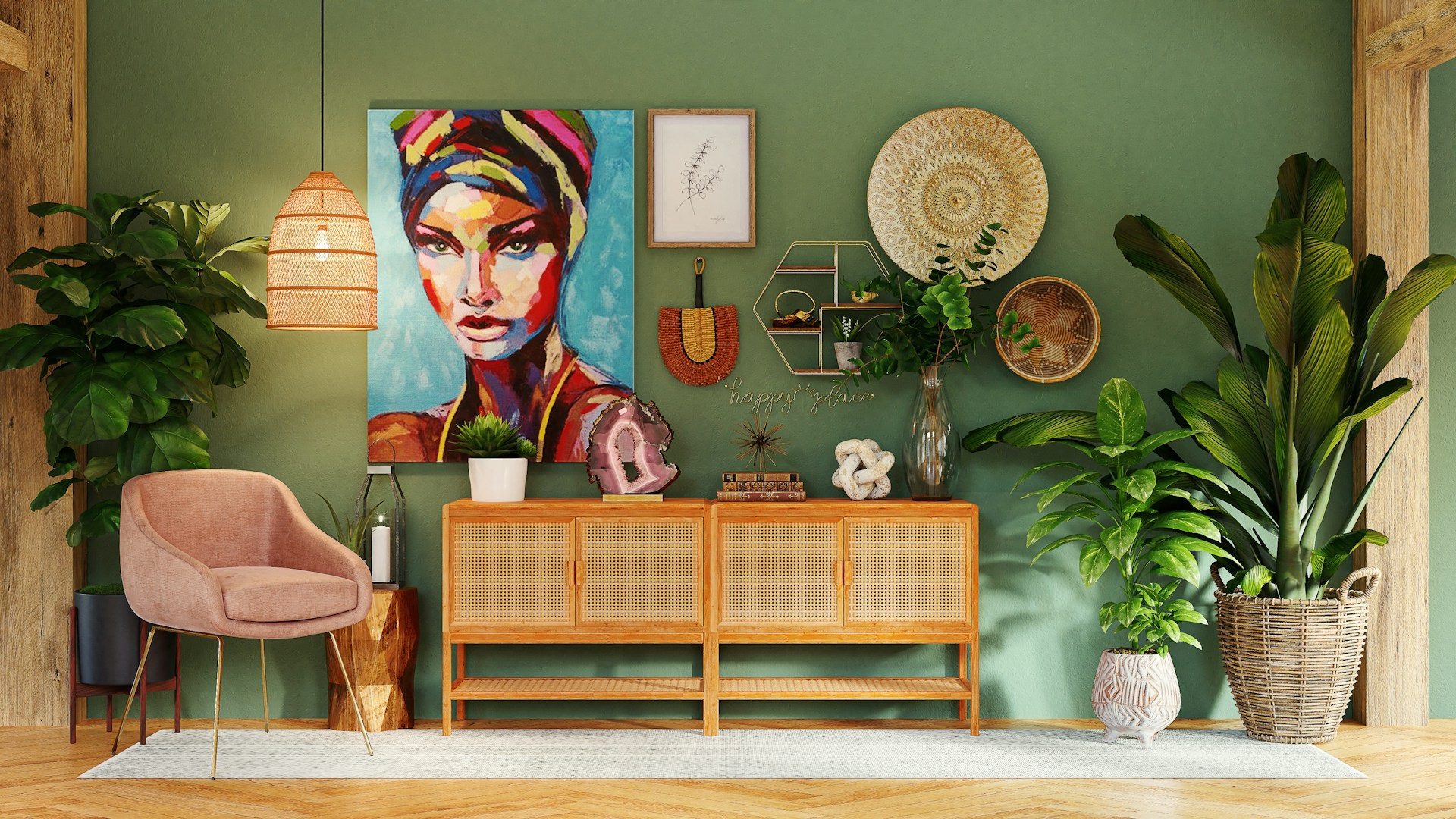
Blog
Polyester: A low-cost, versatile fabric for decorating

Polyester is a manufactured material – its full name is polyethylene terephthalate, or PET for short – that is technically a type of plastic, known for being inexpensive and durable, making it popular for use in a wide range of projects, including interior decoration.
Industrialized polyester dates back to the 1940s, and to the United Kingdom in particular. It was invented by a British chemist. America then took an interest in polyester, buying it from DuPont Corporation, which saw the material’s potential.
جدول المحتويات
How is polyester fabric made?

A collection of multi-colored polyester fabric (image from unsplash)
Polyester is made by combining ethylene glycol and terephthalic acid. Although the fabric is practical, its popularity has waned in part because ethylene glycol is derived from petroleum. However, there is no escaping the fact that it is cost-effective to manufacture clothing and decorative products from polyester.
Polyester material properties

Quilt on the bed (image from unsplash)
Polyester is a very lightweight material, but despite this, it has incredible strength and is unlikely to wrinkle or damage easily. Moreover, because the fabric is synthetic, it doesn’t stretch or shrink, and it retains its shape well. Therefore, when designing home furnishings or fashion items, it’s easy to create permanent folds using polyester.
Polyester is easy to dye, easy to care for, and easy to wash and dry on the clothesline or in the dryer. Often, cotton is blended with polyester, creating a polycotton fabric.
Polyester fibers can be knitted or woven to make the material. If knitted, it gains maximum flexibility. Polyester also naturally resists moisture, which means that moisture will seep out rather than absorb.
Uses of polyester fabric in interior decoration

The sofa in the living room is upholstered in polyester fabric (photo from unsplash)
When it comes to interior decoration, polyester fabric is a popular choice. It is widely used, especially in bed sheets, pillow fillings, quilts, tablecloths, upholstery, and curtains. It provides durability, resists wrinkles and fading, and is available at an affordable or even simple cost.

Dark curtains executed in polyester fabric
Available in a variety of colors and designs, polyester lends itself to many styles. Here are the most common uses:
- Upholstery: Polyester covers pieces of furniture, such as: Sofas and chairs.
- Pillows: Decorative cushions, made of polyester, can be used on sofas, chairs, and beds to add a pop of color and pattern.
- Tablecloths and napkins: Polyester can be used to decorate dining tables, adding elegance and personality to mealtimes.
- Wall decor: Polyester fabric can be used as an alternative to wallpaper or paint by applying it directly to the walls to create a unique and textured look.
These are just a few examples of how to use polyester at home.
Decorating with fabric
Decorating with fabric is all about making the latter more interesting, visually, functionally, or even to express your personal style. There are many techniques you can use to decorate fabric, from simple sewing stitches to intricate embroidery or dyeing methods.
Common goals for decorating with fabric include:
- Aesthetics means making the fabric more attractive by adding color, pattern, or texture.
- Functionality i.e. adding features, such as: Pockets, lining, or accessories.
- Personalization means creating unique pieces that reflect the homeowner’s taste or add sentimental value.
Here’s a look at some common fabric decorating techniques:
- Printing: Applying designs or patterns directly to fabric using stencils, printers, or screen printing.
- Dyeing: Adding color to fabric using dyes and different techniques, such as: tie-dye or batik.
- Embroidery: The sewing of decorative designs on fabric, with thread or yarn.
- Embroidery: Stitching pieces of fabric onto another fabric to create a design.
- Patchwork: Sewing pieces of fabric together in a mosaic-like pattern.
- Painting: Applying paint or other media directly to the canvas for a more artistic approach.
People of all skill levels can enjoy decorating with fabric to create unique home decor items.
Decorating with fabric can transform an ordinary fabric into something unique, adding touches of color, intricate patterns, or interesting textures, completely changing the look of a home space. Throughout history, fabric decoration has been used to tell stories.
